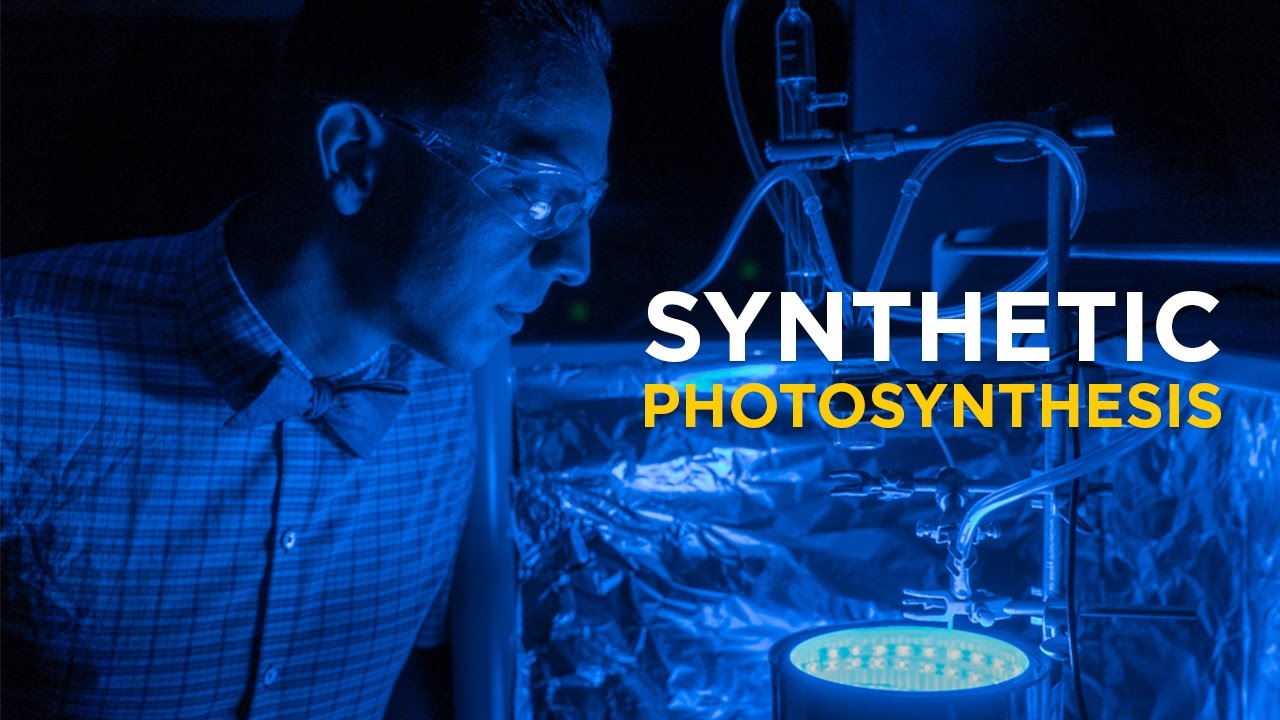How To Become More Self-Sufficient Without Starting a Full-Blown Farm…
Want to start preserving your harvest, making your own soap, or building a backyard root cellar — but not sure where to begin? “Homesteading Advice” gives you instant lifetime access to 35+ practical homesteading books on food preservation, veggie gardening, DIY natural cleaning products (save over $250 per year with this skill alone), brewing, off-grid energy, and a whole lot more…
Click Here To Check It Out Now!
A chemistry professor has just found a way to trigger the process of photosynthesis in a synthetic material, turning greenhouse gases into clean air and producing energy all at the same time.
The process has great potential for creating a technology that could significantly reduce greenhouse gases linked to climate change, while also creating a clean way to produce energy.
“This work is a breakthrough,” said UCF Assistant Professor Fernando Uribe-Romo. “Tailoring materials that will absorb a specific color of light is very difficult from the scientific point of view, but from the societal point of view we are contributing to the development of a technology that can help reduce greenhouse gases.”
The findings of his research are published in the Journal of Materials Chemistry A .
Uribe-Romo and his team of students created a way to trigger a chemical reaction in a synthetic material called metal–organic frameworks (MOF) that breaks down carbon dioxide into harmless organic materials. Think of it as an artificial photosynthesis process similar to the way plants convert carbon dioxide (CO2) and sunlight into food. But instead of producing food, Uribe-Romo’s method produces solar fuel.
It’s something scientists around the world have been pursuing for years, but the challenge is finding a way for visible light to trigger the chemical transformation. Ultraviolet rays have enough energy to allow the reaction in common materials such as titanium dioxide, but UVs make up only about 4 percent of the light Earth receives from the sun. The visible range – the violet to red wavelengths – represent the majority of the sun’s rays, but there are few materials that pick up these light colors to create the chemical reaction that transforms CO2 into fuel.
Researchers have tried it with a variety of materials, but the ones that can absorb visible light tend to be rare and expensive materials such as platinum, rhenium and iridium that make the process cost-prohibitive.
Uribe-Romo used titanium, a common nontoxic metal, and added organic molecules that act as light-harvesting antennae to see if that configuration would work. The light harvesting antenna molecules, called N-alkyl-2-aminoterephthalates, can be designed to absorb specific colors of light when incorporated in the MOF. In this case he synchronized it for the color blue.
His team assembled a blue LED photoreactor to test out the hypothesis. Measured amounts of carbon dioxide were slowly fed into the photoreactor — a glowing blue cylinder that looks like a tanning bed — to see if the reaction would occur. The glowing blue light came from strips of LED lights inside the chamber of the cylinder and mimic the sun’s blue wavelength.
It worked and the chemical reaction transformed the CO2 into two reduced forms of carbon, formate and formamides (two kinds of solar fuel) and in the process cleaning the air.
“The goal is to continue to fine-tune the approach so we can create greater amounts of reduced carbon so it is more efficient,” Uribe-Romo said.
He wants to see if the other wavelengths of visible light may also trigger the reaction with adjustments to the synthetic material. If it works, the process could be a significant way to help reduce greenhouse gases.
“The idea would be to set up stations that capture large amounts of CO2, like next to a power plant. The gas would be sucked into the station, go through the process and recycle the greenhouse gases while producing energy that would be put back into the power plant.”
Perhaps someday homeowners could purchase rooftop shingles made of the material, which would clean the air in their neighborhood while producing energy that could be used to power their homes.
“That would take new technology and infrastructure to happen,” Uribe-Romo said. “But it may be possible.”
Other members of the team who worked on the paper include UCF graduate student Matt Logan, who is pursuing a Ph.D. in chemistry, and undergraduate student Jeremy Adamson, who is majoring in biomedical sciences. Kenneth Hanson and his research group at Florida State University helped interpret the results of the experiments (via UCF).
If you like this idea, be sure to share it with your friends and inspire someone you know. Anything becomes possible with just a little inspiration…

